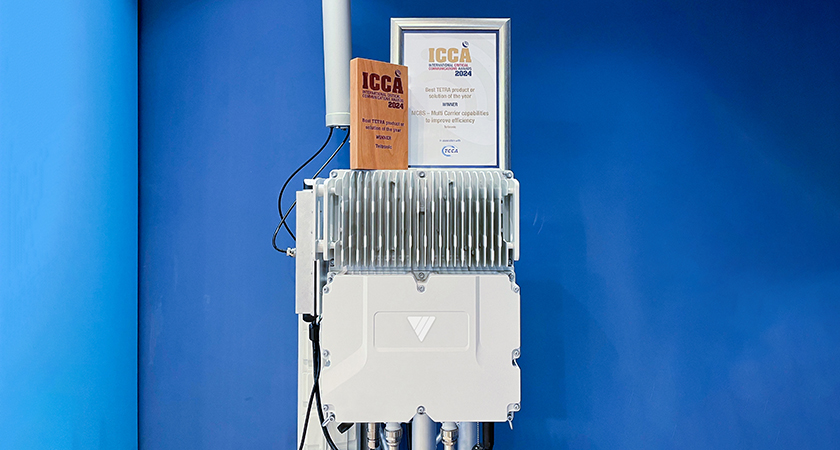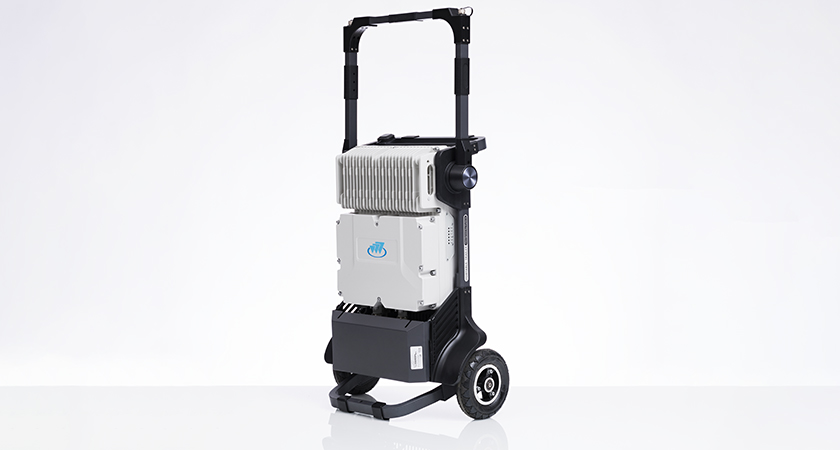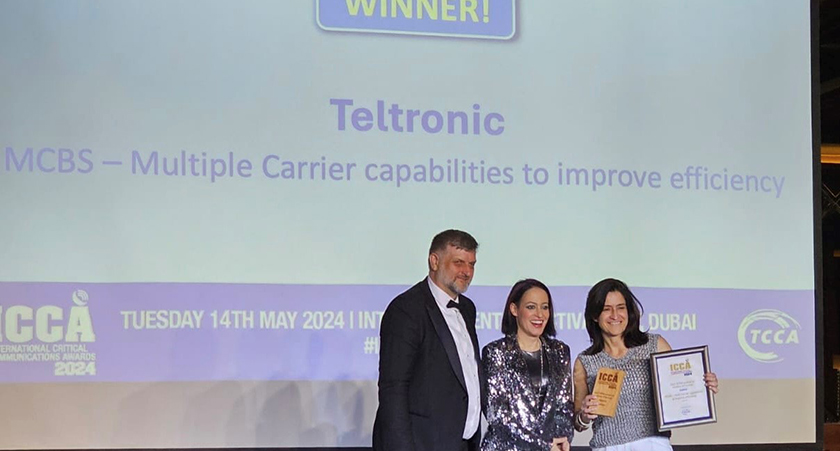
At the last edition of the International Critical Communications Awards, the MCBS was recognised as “Best TETRA product or solution of the year“, an award that highlights Teltronic’s R&D work and the company’s commitment to continue developing a technology that still has a long way to go.
But what did the jury see to recognise this base station? The truth is that the MCBS marks a significant advance in the mission-critical radio communications sector, since thanks to its RF power of up to 40W and its multi-carrier capacity, it can match the performance of cabinet format base stations in a compact unit of reduced weight and size.
The great strengths of the MCBS lie in the use of SDR (Software Defined Radio) technology, which makes that the components that have been typically implemented in hardware are instead implemented by means of software. Thanks to these SDR techniques, the MCBS is capable of incorporating up to 4 TETRA carriers, presenting itself in different configurations to be able to adapt to the characteristics of each deployment.
Thus, the MCBS is configured and monitored remotely from NEBULA’s NMS system, which, through a complete set of functionalities, allows real-time monitoring of its status, network user activity, access to statistics, alarm resolution, etc,
Furthermore, from the management platform it is possible to increase the number of radio resources available in a TETRA area in a very simple way only by adding new licenses remotely, as no additional hardware or visit to the area is required to enable new carriers.
This possibility to increase an additional carrier (floating carrier) on any MCBS in the network (without exceeding the maximum number of carriers allowed per unit), on a non-permanent basis, is especially useful in case of emergency scenarios or special events, and its association-disassociation from the network is done remotely by a network administrator.
In addition, it supports up to 2 units in cascade to deliver 8 carriers, which allows to have more carriers in a zone to enable higher concentrations of users and traffic load, or to create redundancies by having one of them acting as the main unit while the other one remains in stand-by mode.

This versatility is shown by the fact that it is also available as a tactical unit. The MCBS transportable base station can operate in an already deployed network to increase coverage or traffic capacity, or as a fully stand-alone system, without connection to other base stations or a Central Control Node.
Environmental benefits
Some of the most decisive aspects of the MCBS design stemmed from the company’s environmental concerns.
Firstly, reducing the size of the device compared to other base stations, and particularly those housed in cabinets, means less raw materials are used and less waste is generated, considerably improving the carbon footprint of its manufacture.
The carbon footprint is also reduced in the packaging and transport phases to the deployment site; thanks to its smaller size, it allows more units to be transported in the same space, and the packaging material and waste generated is reduced.
Secondly, energy consumption is significantly reduced. If a cabinet with 4 carriers consumes 1500 W, the same configuration in an MCBS reduces the consumption to 450 W. In addition to this saving, there is the fact that, as it does not need to be installed in a technical room, it does not require cooling elements.
Precisely, the possibility of being installed on a mast offers another environmental strength, as it does not require the construction of a technical room, which is particularly valuable when the network is being deployed in natural, protected or environmentally valuable areas.

In addition, in difficult to access locations such as forested or mountainous areas where there is a priori no connection to the AC power grid and where communication is only required at specific times (e.g. in forest surveillance environments), the MCBS allows for a sustainable power supply with solar panels and batteries.
Finally, the design has always sought to improve both the durability of the product and its repairability, trying to maximise the product’s lifetime and thus reduce its carbon footprint.
Competitive advantages well appreciated by the market
The MCBS is a unique solution in the market: it offers the highest performance in a reduced format, maintaining all the functionalities with the QoS that critical environments require; it simplifies network management as it allows many of the operations to be done remotely; it reduces the CAPEX of TETRA infrastructure acquisition and reduces deployment times; its licensing model for configuration reduces the OPEX of operation and maintenance; it consumes less energy; it adapts to any kind of deployment…
All these qualities have made it to be consolidated in Teltronic’s portfolio as a differential solution. Its versatility, power and deployment flexibility make it the preferred option for large deployments, improving the competitiveness of the solution.
Projects such as the Aragón network (one of the largest regions in Spain with 47,719 km2) or the Salvador de Bahía network are already benefiting from a base station that manages to maintain the highest performance while reducing its size, simplifying its installation and facilitating its management through SDR technology.


